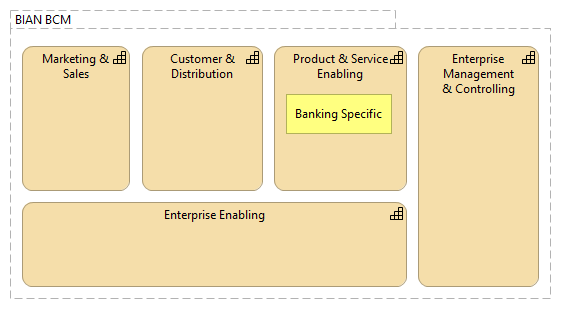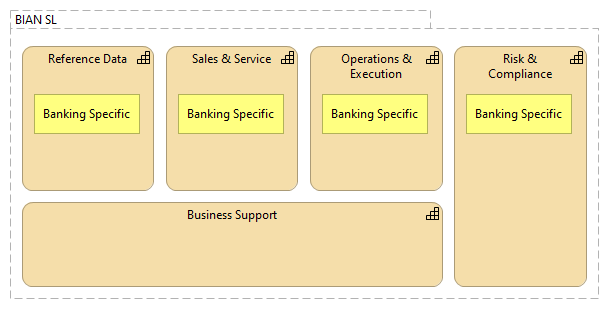There seems to be two different schools of defining the business capability maps/models – for same business area/domain one produces very generic domain-independent business capabilities and another much more domain-dependent business capabilities.
If the main purpose of business capability map/model is to support the strategic thinking, then it seems strange to abstract out all the domain specific traits from this tool, because the result would not have “high enough resolution”, to see the strategically important things in the business capabilities.
Therefore, although it would be easier to create more generic business capability map/model, the more useful business capability map would be specific to the business domain (or even to the particular enterprise).
According to the WikiPedia, business capability maps/models are one of the most widely used Enterprise Architecture artifacts (see Enterprise Architecture Artifacts).
If looking at the different business capability maps, then an interesting thing sticks into eye – some business capability maps of the same business area/domain are more generic than others, up to the point, where only small part of the business capabilities, if any, are business-specific.
Although the definitions of business capability are rather well converging (see various definitions in Business Capabilities vs Business Processes) into „an ability or capacity that a business may possess to achieve a specific purpose”, there seems to be two different schools of thought in respect of what is the purpose of business capability map/model and how to identify and define the business capabilities.
This is especially well illustrated by the change that happened in BIAN between versions 6 and 7 (see BIAN v7.0 Release Notes), when additionally to already existing business capability map, called in BIAN “Service Landscape” (SL) a new business capability map (BIAN “Business Capability Model”) was added, and (business) service domains, which previously were considered as „business capabilities” (see BIAN How-to Guide and Design Principles & Tehniques) were re-considered/-purposed as „business capacities”.
Therefore we could consider both models as actually business capability maps, but created from different viewpoint (using different method).
The reasoning behind these differences is given in the BIAN white-paper on BIAN BCM alignment with the BIAN SL (see BIAN Business Capability Model Statement of Alignment with the BIAN Service Landscape):
The BCM can be considered as an external perspective. It does not attempt to reconcile 'what needs to be done to create value' with 'what is needed in terms of the specific internal functional capacities' (put another way: a BCM defines 'what', not 'how'). The BSL conversely is more of an internal perspective that defines all of the essential functional capacities that are required to support any of the intended business activities. But in contrast, the BSL does not formally associate the use of its identified functional capacities with any specific business value creating context.
If we now compare these two maps/models, we see that the BIAN BCM isa much more generic than BIAN SL (i.e., much smaller part of the Business capability model deals with the banking-specific functionality ):
 vs  That seems counter intuitive, if we think that the purpose of BIAN BCM is to support the strategy work, that this particular model is actually less banking specific than BIAN SL.
The same school of thought is also visible in the ACORD Capability Model (see ACORD Capability Model) and in the example for business capability map/model for public libraries (see A Brief Introduction to Business Capabilities and Capability Model).
All these three examples consist mostly of the same business capabilities, which any enterprise or institution would need, see:
Even if we could agree that strategies for banks and insurance companies could be similar, then I is difficult to see that a strategy of a public library would be similar to bank or insurance company strategy, although the business capability map, supporting the strategy work, might let us think that way.
Obviously the cause is over-generalization, which on certain level of abstraction makes all enterprises and institutions (in western culture context) similar, but that will not help to make strategic analyzes or development of the strategy (especially the strategy that allows enterprise to distinguish itself in the marketplace).
If the main purpose of business capability map/model is to support the strategic thinking, then it seems strange to abstract out all the domain specific traits from this tool, because the result would not have “high enough resolution”, to see the strategically important things in the business capabilities.
Therefore, although it would be easier to create more generic business capability map/model, the more useful business capability map would be specific to the business domain (or even to the particular enterprise).
|